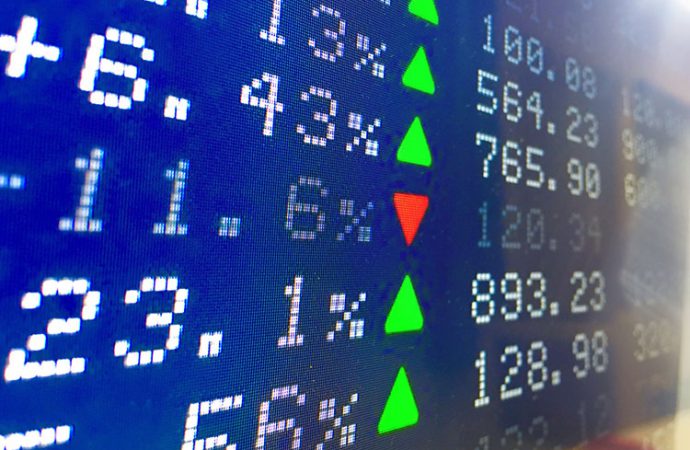Pakistan is facing a worrisome economic crisis due to currency depreciation which could become a worst-case scenario if not dealt with suitable economic policies. The devaluation of the Pakistani rupee has become a longstanding risk for Pakistan’s economy, making it more vulnerable. The ongoing situation is becoming a major cause of distress from both micro
Pakistan is facing a worrisome economic crisis due to currency depreciation which could become a worst-case scenario if not dealt with suitable economic policies. The devaluation of the Pakistani rupee has become a longstanding risk for Pakistan’s economy, making it more vulnerable. The ongoing situation is becoming a major cause of distress from both micro and macro perspectives. What will be the consequences of PKR depreciation on the economy of Pakistan?
Currency depreciation is an unofficial increase in the exchange rates due to the demand and supply of currency. This happens when a country is following the floating exchange rate system. The exchange rate means the value of one currency for the purpose of conversion to another. The economic situation in Pakistan due to the rise of the US dollar is a matter of prime importance because the rupee depreciation against the dollar will have grave consequences. Nowadays, currency depreciation is one of the most prominent issues in Pakistan and has always created severe economic problems.
There are two levels of economy, micro and macro. The micro-level of the economy includes individual and business decisions, while the macro-level analyses the decisions made by countries and governments. Micro-level focuses on supply, demand, and other forces that determine price levels, making it a bottom-up approach. Investors can use microeconomics in their investment decisions. The macro-level takes a top-down approach and determines the course and nature of the economy. Hence, Macroeconomics is an analytical tool used to craft economic and fiscal policies.
There are many issues and challenges at the micro and macro levels of the economy due to the increase in the exchange rates. Pakistan is facing macro-level issues including unemployment, high-interest rates, inflation, and worsening GDP. In contrast, the issues at the micro level are poverty, monopoly, and rising prices. Pakistan imports fertilisers, oil, food items, machinery, and other raw materials. In the current scenario, the prices of commodities are increasing at a greater pace due to the increasing prices of imported goods.
The PKR depreciation will also increase the cost of doing business, which will lower the business competitiveness in the international market. Exchange rate fluctuations will have severe consequences like impacts on interest rates, production levels, prices, and employment opportunities. Due to the greater exchange rates and currency depreciation, more loans will be taken from the IMF to return the previous ones, and then the country will have to convert a huge amount of PKR into USD to return those loans.
The exports of Pakistan will be increased due to the devaluation of the currency because a greater number of resources will be exported at a lower price. Similarly, the increase in prices of imports will also harm the economy as the import bills will increase. A significant danger is that devaluation can exaggerate inflation by hiking the price of imports and stimulating greater demand for domestic products. If this happens, the government may have to raise interest rates to control inflation, but at the cost of slower economic growth.
Pakistan is dealing with several economic issues due to the recent fluctuations in PKR. It demonstrates that Pakistan is included in the list of developing countries. The PKR depreciation is forcing Pakistan’s Gross Domestic Product (GDP) towards a downfall. This is because of increased prices of imported goods and increased exports at lower prices. GDP is the total amount of goods and services produced in an economy. Due to the increase in exports at lower prices and higher prices of imports, GDP is falling at an accelerated rate. The economy is suffering due to the imbalance between imports and exports.
The increased exports will also cause an imbalance in the economic structure and a rapid increase in aggregate demand. Aggregate demand is a macroeconomic term representing the total demand for goods and services at any given price level in a particular period. When the goods are exported at a much higher rate with lower prices, there becomes a shortage of those goods in the country. So, it is obvious that a faster export rate will increase the aggregate demand for the economy of Pakistan.
The long terms consequences of currency fluctuation and devaluation could be brutal for Pakistan if this issue is not given due importance right now. Pakistan should learn from the example of Sri Lanka and how its economy has been devastated. The inflation rate in Sri Lanka is also very high, obviously due to its currency’s devaluation. The government should pay heed to this threatening issue of the continuous fluctuations of PKR. If proper policies are not adopted to curb this issue of PKR depreciation, Pakistan will face the same problems which Sri Lanka is facing for quite a time now.
- Impacts of Floods on National Security - October 27, 2022
- US-Pakistan Relations - September 20, 2022
- Why Karachi Gets Flooded - September 9, 2022












Leave a Comment
Your email address will not be published. Required fields are marked with *